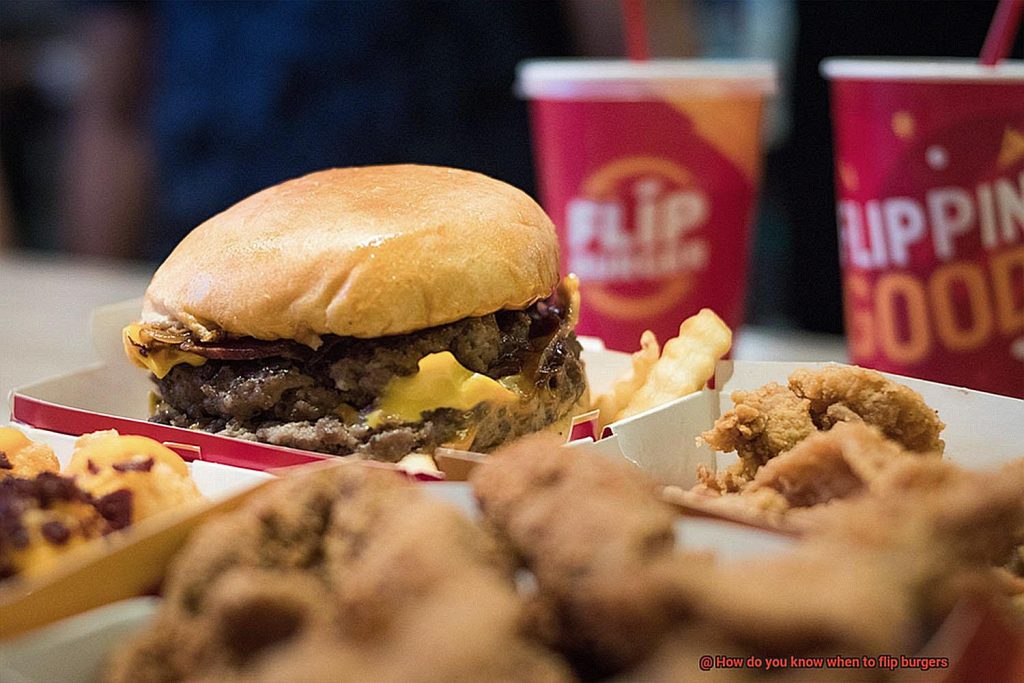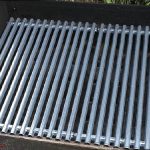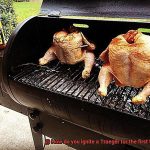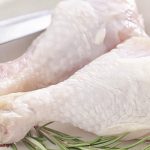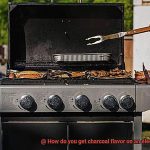Are your burgers always turning out either burnt to a crisp or raw in the middle? Do you find yourself constantly questioning when to flip them while grilling? If you’re nodding along, then listen up. Knowing when to flip burgers is crucial for achieving that perfect balance of juicy and succulent meat with a crispy exterior.
But let’s face it, there’s no one-size-fits-all answer to this question. It depends on various factors like patty thickness, heat level, and grill type. So how do you know when it’s time to give those patties a flip?
In this blog post, we’ll dive deep into the art of flipping burgers and explore everything you need to know about timing that crucial flip. We’ll cover all the important factors that affect the cooking process and share some helpful tips and tricks for mastering your burger flipping game.
By the end of this article, you’ll be equipped with all the knowledge needed to become a true burger-flipping pro. So get ready to impress your friends and family with perfectly cooked burgers every time you fire up that grill.
Contents
Factors that Affect the Cooking Time of a Burger
Grilling a mouth-watering burger is an art that requires attention to detail. One of the most critical factors to consider is the cooking time, which can be influenced by several factors. Let’s delve into the different factors that can impact the cooking time of a burger.
Firstly, the thickness of the patty is a crucial aspect that determines how long it takes to cook a burger. A thicker patty will require more cooking time than a thinner one. It’s essential to use a meat thermometer to check the internal temperature of thicker patties to ensure they are cooked through.
Secondly, the temperature of the grill is another vital factor that affects the cooking time. High heat will cook burgers faster than lower heat, so it’s essential to monitor the grill and adjust the heat as needed to prevent burning.
Thirdly, the desired level of doneness is also crucial when it comes to cooking time. If you prefer rare or medium-rare burgers, they will take less time to cook than well-done ones. Knowing your desired level of doneness and adjusting your cooking time accordingly is key.
Aside from these main factors, other elements can impact cooking time, such as toppings, seasonings, and weather conditions. Adding toppings or seasonings can add moisture and affect cooking time, while weather conditions such as wind or rain can make it difficult to maintain consistent heat on the grill.
To sum up, there are various factors that can affect the cooking time of a burger. By paying attention to these factors and adjusting your cooking time accordingly, you can ensure your burgers turn out perfectly cooked and juicy every time. In summary, here are the main factors that affect cooking time:
- Thickness of the patty
- Temperature of the grill
- Desired level of doneness
- Toppings and seasonings
- Weather conditions
The Ideal Time to Flip Burgers
It’s time to learn the secret to achieving perfectly cooked, juicy burgers every time – knowing when to flip them on the grill. As a burger flipping expert, I’m here to share some tips and tricks that will help you take your grilling game to the next level.
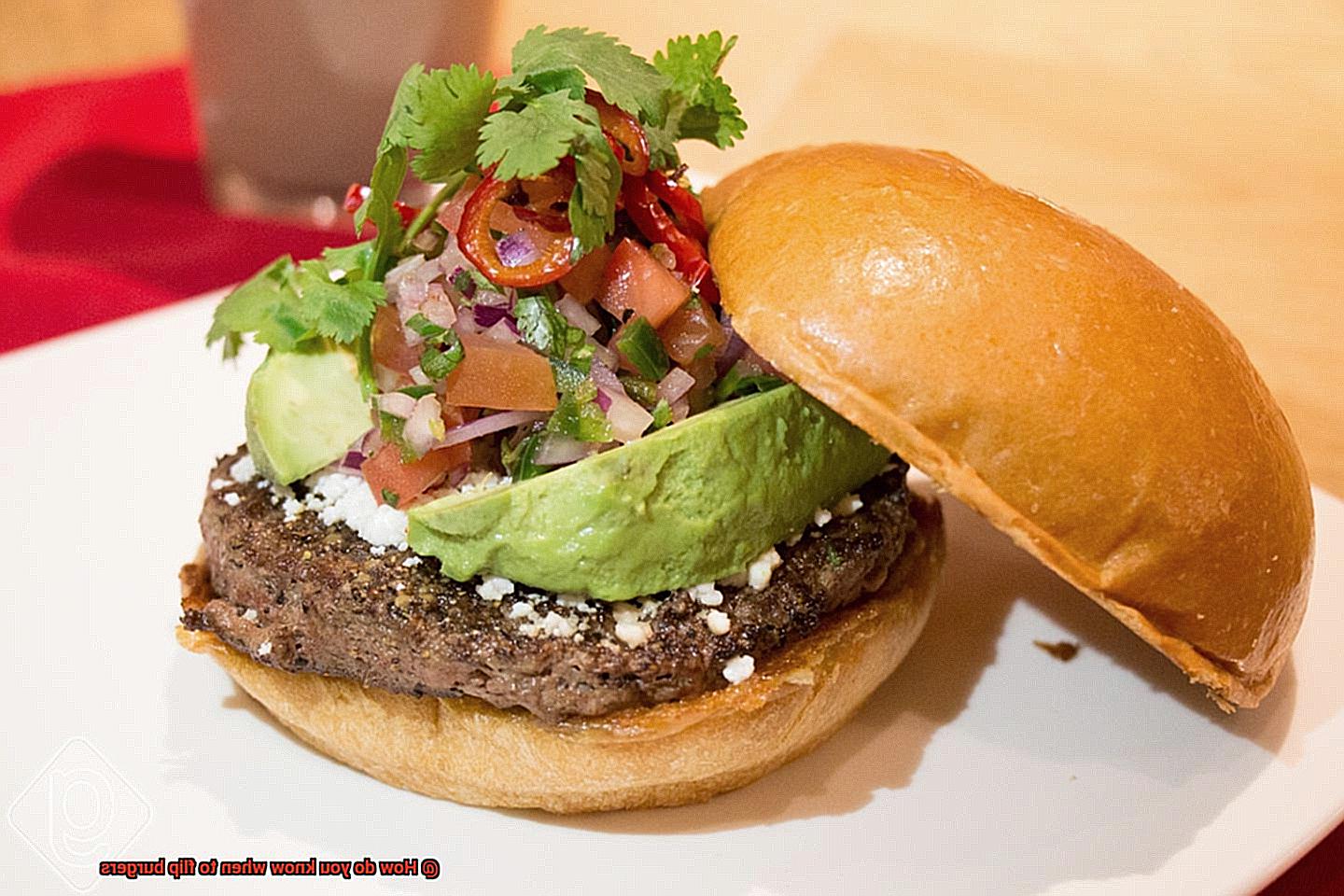
First things first, let’s address the most common mistake people make when grilling burgers – flipping them too frequently. Not only does this cause the patties to fall apart and lose their juices, but it also results in an inferior final product. The key is to wait until the burgers have formed a crust on the bottom before flipping them. This crust not only helps hold the burger together but also keeps those delicious juices inside where they belong.
So, what’s the ideal time to flip burgers? It’s when they release easily from the grill grates. On average, thinner patties will need about 4-5 minutes on one side, while thicker ones will need 6-7 minutes. But don’t rely solely on timing – use a meat thermometer to ensure that they are cooked to a safe internal temperature of 160°F (71°C) before flipping. Once they reach this temperature, it’s safe to flip them over and cook for an additional 2-3 minutes on the other side.
Now, let’s talk about what NOT to do while grilling burgers – pressing down on them. This will only result in dry and flavorless burgers. Instead, use a spatula to gently lift and flip the burgers.
To summarize, here are some key points to remember:
- Wait until the burgers have formed a crust on the bottom before flipping
- Use a meat thermometer to ensure they are cooked to a safe internal temperature
- Don’t press down on the burgers while cooking
Tips for Flipping Burgers
Flipping burgers may seem like a simple task, but there are important factors to keep in mind to ensure the burgers are cooked to perfection. Here are five tips to help you master the art of flipping burgers:
Timing is Key
The first and most crucial tip is to be patient and not flip the burgers too early. Let them cook for at least 3-4 minutes on one side before flipping. This allows the burger to sear and develop a crust, which helps prevent it from sticking to the grill.
Use a Spatula, Not Tongs
When flipping burgers, always use a spatula instead of tongs. A spatula helps you get under the burger and lift it without breaking it apart. Tongs can easily pierce the burger and cause it to lose its juices, resulting in a dry and less flavorful burger.
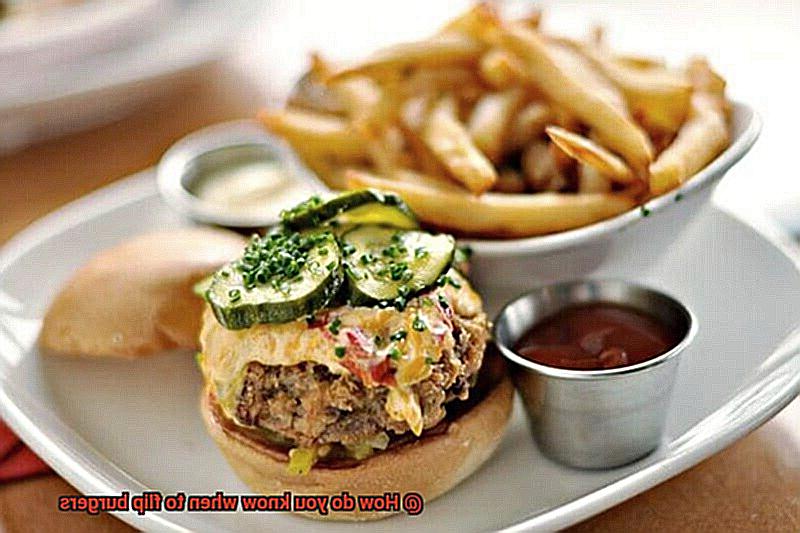
Flip Only Once
Resist the urge to flip your burgers multiple times. Flipping them only once is enough to ensure that they cook evenly on both sides. Flipping them too often can cause them to dry out and become tough, ruining the texture of your burger.
Check for Doneness
Knowing when to flip your burger is important, but knowing when it’s done is equally crucial. Use a meat thermometer to check the internal temperature of the burger. For medium-rare burgers, the temperature should be around 130-135°F, while medium burgers should be around 135-145°F.
Heat Up Your Grill
Make sure your grill is hot enough before adding the burgers. A hot grill helps sear the meat and prevents sticking, making flipping easier and ensuring that your burger has that delicious charred flavor.
How to Avoid Dry Burgers
There’s nothing quite like biting into a juicy and flavorful burger, but unfortunately, dry burgers can be a common problem when grilling. To help ensure that your burgers turn out perfectly every time, here are some tips to avoid making dry burgers.
Choose the Right Meat
Choosing the right type of meat is essential when it comes to making juicy burgers. Ground beef with a higher fat content will produce a more moist and flavorful burger. Look for ground beef that has a fat content of at least 15-20%. You can also add some moisture to your burgers by mixing in ingredients like chopped onions or grated cheese.
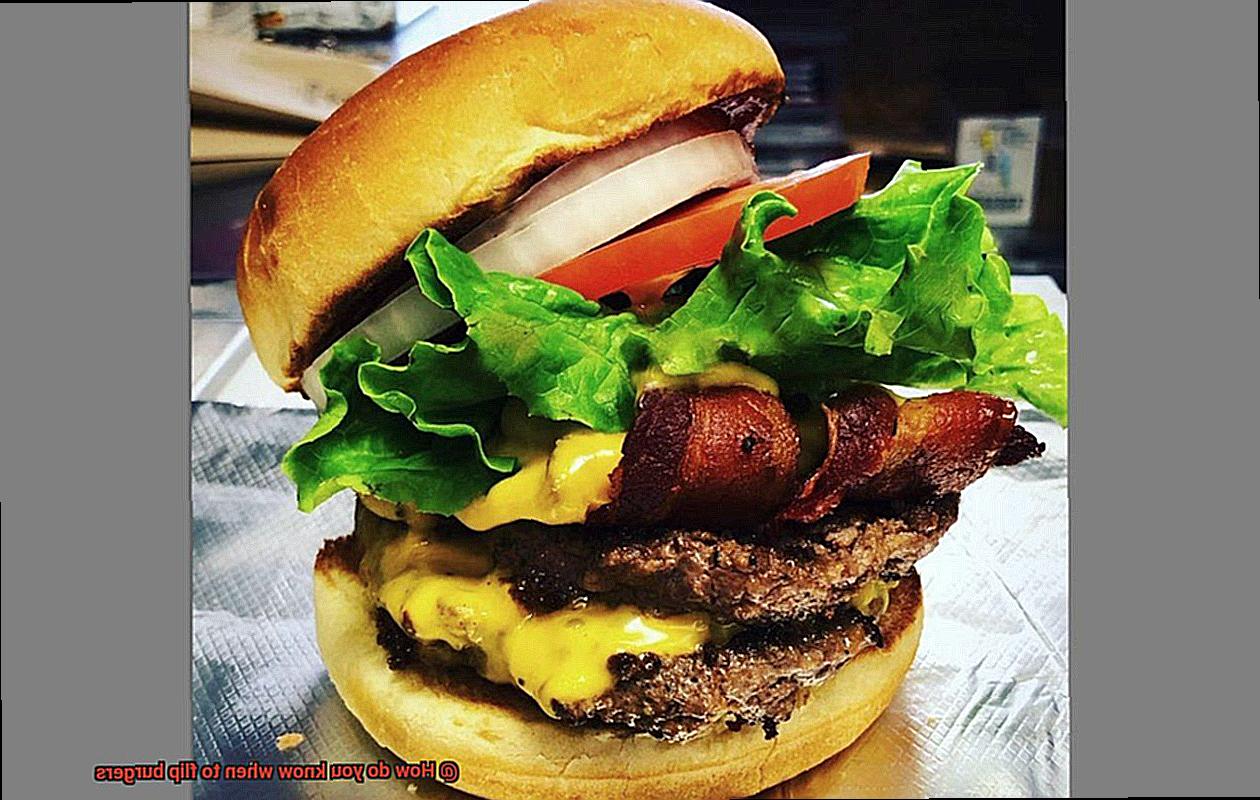
Don’t Overwork the Meat
When forming your burger patties, be careful not to overwork the meat. Overworking the meat can cause it to become dense and tough, leading to dry burgers. Instead, form loose and lightly packed patties that allow for air pockets, which help retain moisture during cooking.
Cook at High Temperature for Short Time
Cooking time and temperature also play a significant role in avoiding dry burgers. It’s crucial to cook the burgers at a high temperature for a short time rather than a low temperature for a long time. This will help sear the outside of the burger, trapping in the juices and preventing them from evaporating.
Flip Burgers Only Once
Flipping burgers too often is one of the most common mistakes people make when grilling. Each time you flip a burger, it loses some of its juices, which can lead to a dry finished product. Try to limit the number of times you flip your burgers, and generally, you should only flip your burgers once during the cooking process. Wait until the first side is fully cooked before flipping.
Avoid Pressing Down on the Burger
While it may be tempting to press down on your burgers while grilling them, this is actually counterproductive and can cause the juices to escape, resulting in a dry burger. Instead, let the burger cook undisturbed until it’s time to flip it, and avoid pressing down on the burger.
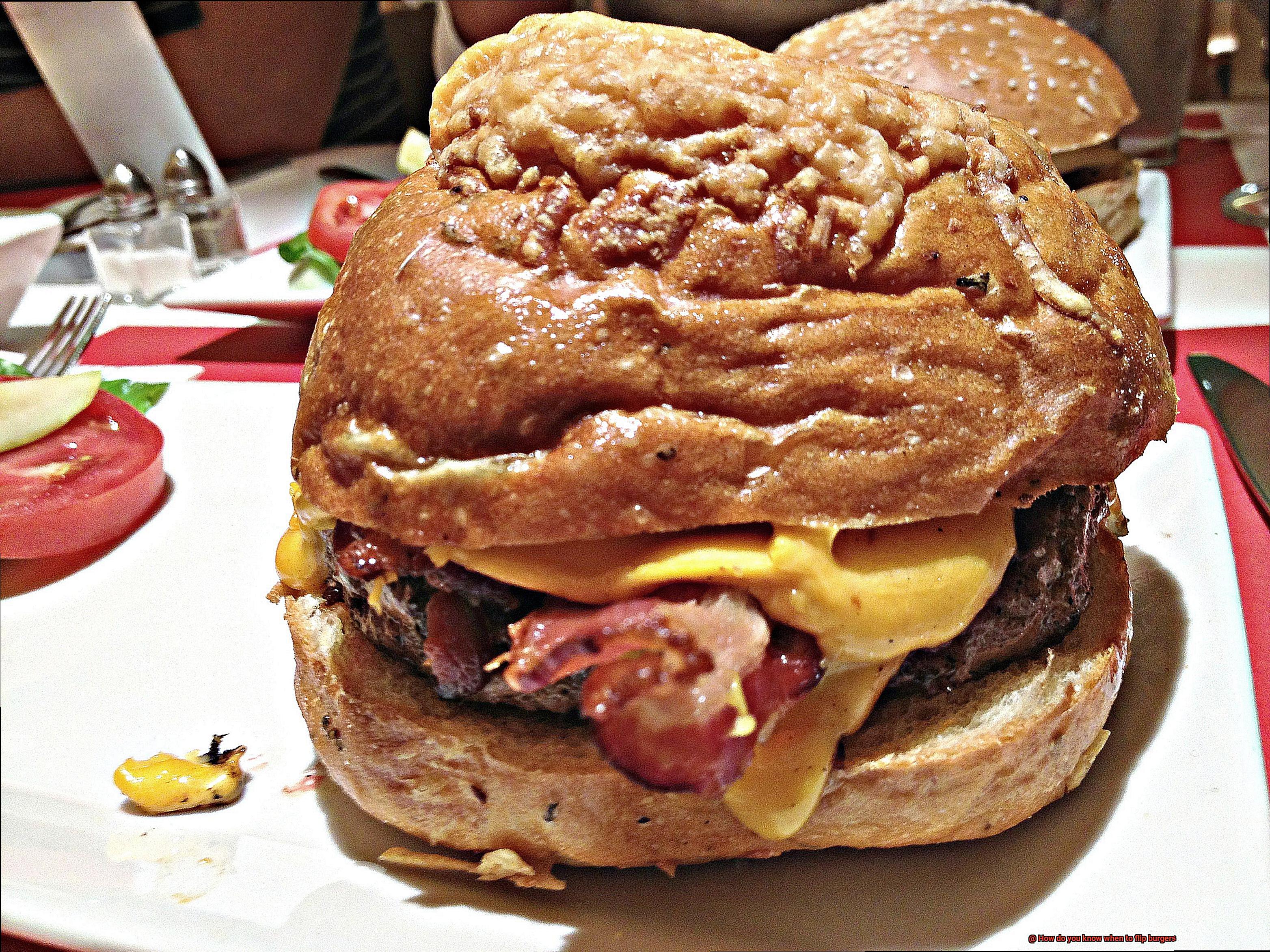
The Different Degrees of Doneness
Burgers are a classic staple in many households. However, cooking the perfect burger can be a challenge. One major factor to consider is the degree of doneness you prefer. The different degrees of doneness refer to how well-cooked your burger is, ranging from rare to well-done.
First up, we have rare burgers. These are cooked for a short amount of time on each side and have a bright red, almost raw center. Although some may enjoy the taste of a rare burger, it’s important to note that it’s not recommended for those with weak immune systems, pregnant women or young children, as it can potentially contain harmful bacteria.
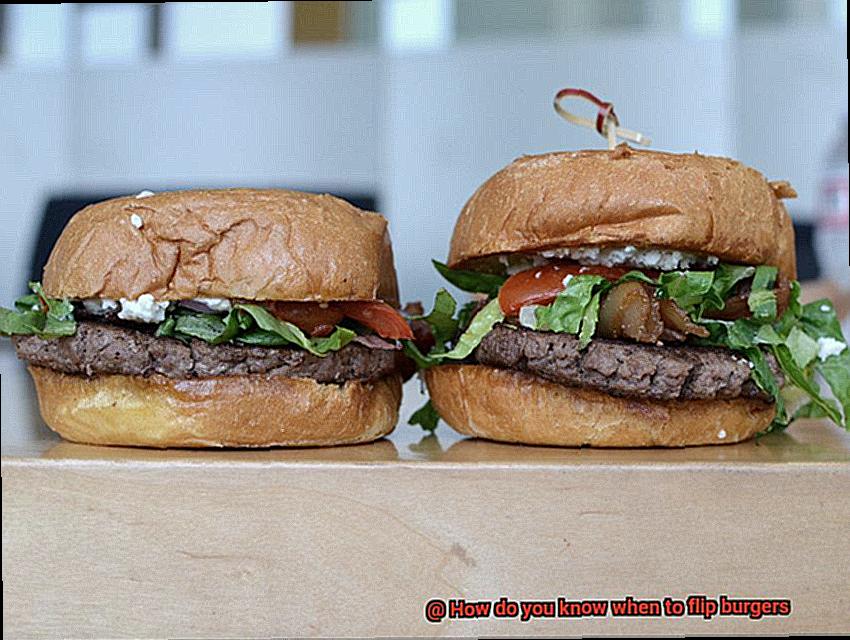
If you prefer your burger with a little more cooking time, medium-rare is a popular choice. This type of burger is slightly more cooked than rare burgers but still has a pink center. You’ll love the juiciness and flavor of a slightly undercooked patty.
For those that want something slightly more cooked than medium-rare, there’s medium burgers. These burgers have a pink center with a slight hint of brown, making them the perfect balance between juiciness and safety in terms of foodborne illness.
If you like your burgers with even more cooking time, try medium-well burgers. These burgers have only a small amount of pink left in the center but still have some moisture left in the patty.
Finally, there’s well-done burgers for those who want their meat fully cooked and free from bacteria. Well-done burgers are cooked all the way through and have no pink left in the center.
Knowing the degree of doneness you prefer is only half the battle. Knowing when to flip your burger is equally important to ensure that it cooks evenly. For rare burgers, flip them once the juices start to pool on the top surface. Medium-rare burgers should be flipped once there’s some browning on the first side and clear juices start to pool on top. If you’re cooking a medium burger, flip it once the juices start bubbling on top and there’s no more visible pink. For medium-well burgers, flip them once there’s no more visible juice on top. And for well-done burgers, flip them once they’re fully browned on one side and there’s no more visible juice.
Benefits of Knowing When to Flip Burgers
There’s nothing quite like biting into a juicy, perfectly cooked burger. But achieving that level of deliciousness requires more than just slapping a patty on the grill and hoping for the best. Knowing when to flip burgers is a crucial skill that can take your grilling game to the next level, and there are many benefits to mastering this art.
Firstly, knowing when to flip burgers results in perfectly cooked burgers every time. By flipping your burgers at the right time, you can ensure that they’re evenly cooked on both sides, with a delicious crust on the outside and a juicy center. No more burnt or raw burgers – just pure, mouth-watering perfection.
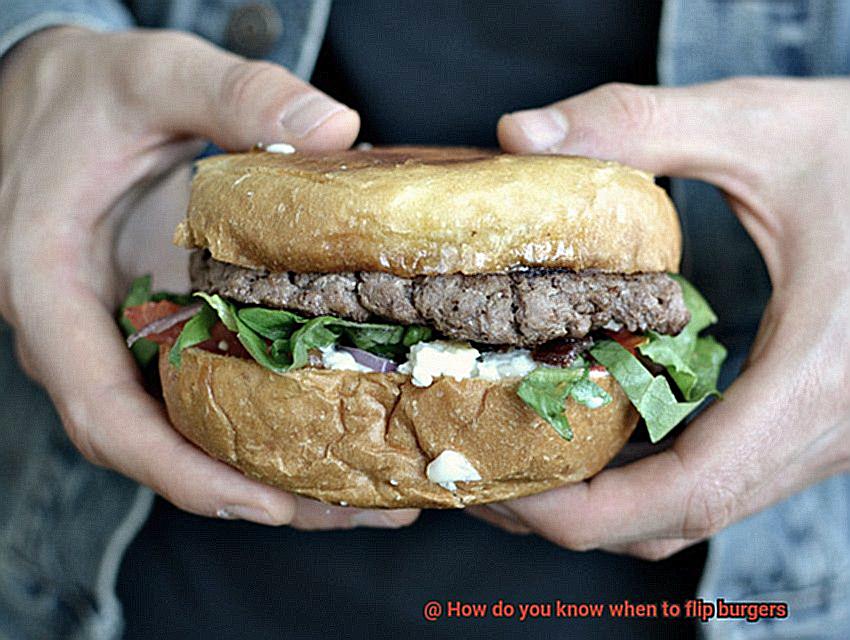
But that’s not all – knowing when to flip burgers can also save you time and hassle. Flipping your burgers too early can result in them falling apart or sticking to the grill, while waiting too long can lead to overcooked and dry burgers. By mastering this skill, you can avoid these issues and save yourself time and hassle.
And let’s not forget about impressing your guests. There’s something about serving perfectly cooked burgers that just screams “grilling pro.” Your guests will be blown away by the juicy, flavorful burgers you serve up, and may even ask for your grilling tips and tricks.
So how do you master the art of flipping burgers? It all comes down to timing. Wait until your burger has formed a crust on the bottom before flipping it – this usually takes about 3-4 minutes. Then, flip your burger and wait another 3-4 minutes for it to cook through. And always use a meat thermometer to ensure your burgers are cooked to a safe temperature.
Common Mistakes When Flipping Burgers
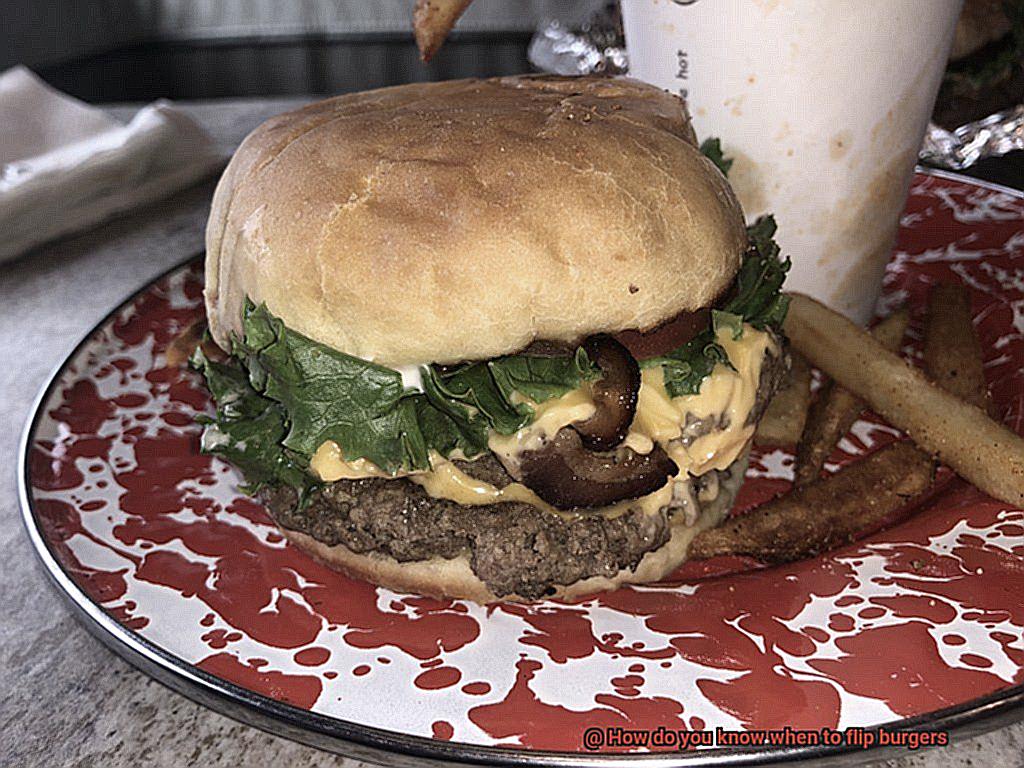
Many people make common mistakes when flipping burgers that can result in a dry, flavorless patty. Here are some tips on how to avoid these mistakes and grill the perfect burger every time.
Firstly, flipping the burger too often is one of the most common mistakes. It’s important to give the burger enough time to cook on one side before flipping it over. Flipping too often can cause the juices to escape, resulting in a dry and tough burger. Take your time and resist the urge to constantly flip your burger. Let it cook for a few minutes on each side before flipping it over.
Secondly, pressing down on the burger with a spatula while it’s cooking is another big mistake. While it may seem like a good idea to speed up cooking time, it actually causes the juices to be pressed out of the burger, resulting in a dry and flavorless patty. Instead, let the burger cook undisturbed for a few minutes before checking.
Thirdly, not preheating the grill enough before placing the burgers on it is another mistake to avoid. A preheated grill ensures that the burger gets a good sear on the outside while remaining juicy on the inside. If the grill is not hot enough, the burger will stick to the grates and not cook evenly. So, make sure your grill is nice and hot before putting those patties on.
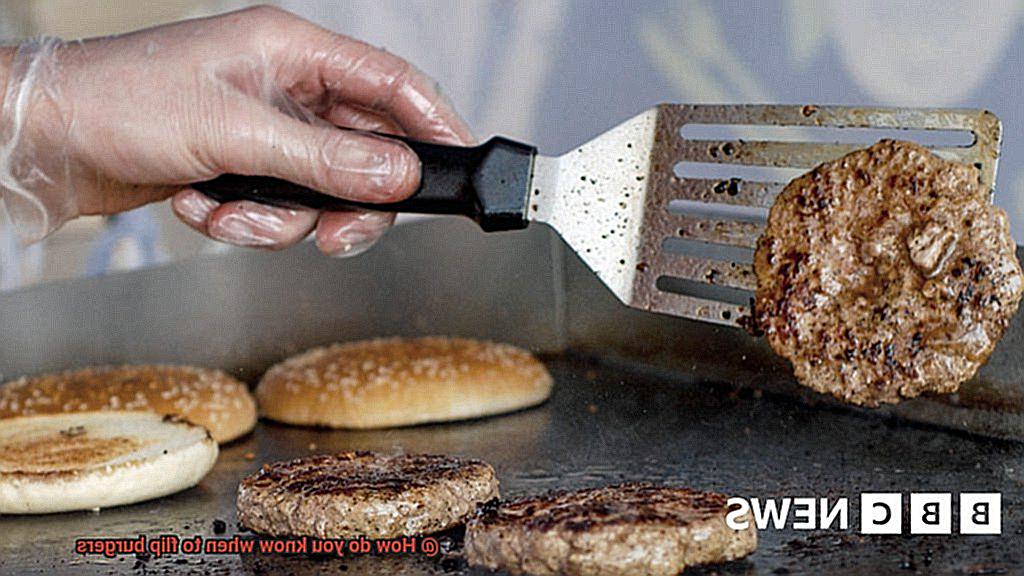
Lastly, moving the burger around too much while it’s cooking is also a mistake. It’s best to let the burger cook undisturbed until it’s time to flip it over. Moving it around too much can cause the juices to escape and result in an unevenly cooked patty.
-jECx3Zvlqg” >
Conclusion
In conclusion, flipping burgers may seem like a simple task, but it requires skill and attention to detail to achieve that perfect burger. The key is to flip the patty at the right moment, which can be determined by factors such as patty thickness, heat level, and grill type.
To ensure a juicy and succulent burger, it’s important to choose meat with a higher fat content and avoid overworking it when forming patties. Cooking at high temperatures for a short time and flipping only once can help retain moisture during cooking.
Knowing your preferred level of doneness is also crucial for evenly cooked burgers. Whether you prefer rare or well-done, mastering the art of flipping burgers will guarantee mouth-watering perfection every time.
Avoid common mistakes such as flipping too often or pressing down on the patty while cooking. By paying attention to these tips and tricks, you can save yourself time and hassle while impressing your guests with perfectly cooked burgers.
In short, flipping burgers is an essential skill for any grill master looking to achieve that perfect balance of crispy exterior and juicy interior.

